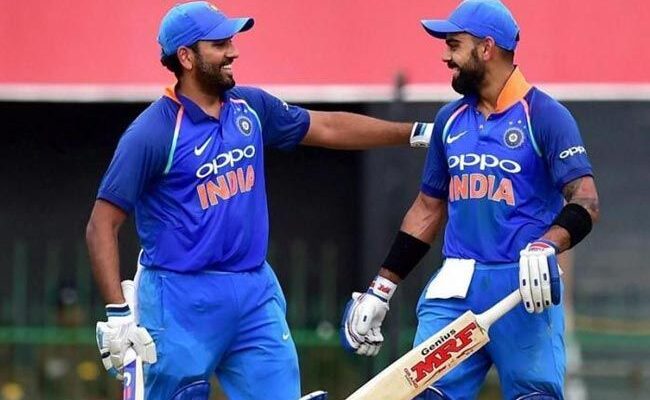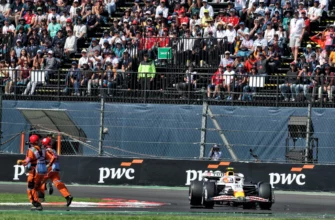In the ever-churning world of international cricket, where cycles of glory and strategic shifts are constant, the focus invariably sharpens on its central figures. For Indian One Day International (ODI) cricket, two names dominate the discourse: Rohit Sharma and Virat Kohli. As the Men in Blue prepare for a critical three-match ODI series against Australia, commencing on October 19 in Perth, the persistent questions surrounding their roles, longevity, and captaincy are once again front and center. This isn`t merely about individual brilliance; it`s about India`s strategic balancing act as it charts a course towards the 2027 World Cup.
The Indispensable Pillars: Rohit`s Leadership and Kohli`s Batting Prowess
Despite their recent decisions to step away from Test and T20 International formats – a strategic move to focus squarely on the 50-over game – the speculation surrounding Rohit Sharma and Virat Kohli remains unrelenting. One might observe a subtle irony in this: players who demonstrably perform at elite levels often find their futures debated with greater intensity than those whose form warrants actual concern. Rohit, in particular, has faced negligible “failure” in his ODI leadership tenure, a point often overlooked amidst the clamor for change. His match-winning performance in the recent Champions Trophy final against New Zealand, coupled with Kohli`s century against Pakistan and top-scoring efforts against Australia in the semi-finals, stand as recent testaments to their continued impact.
The suggestion of removing Rohit from captaincy, therefore, appears to lack a substantive performance-based argument. Unless the captain himself chooses to lighten his burden for batting concentration, continuity often proves a valuable asset, especially in a format where experience provides a palpable advantage.
The Selector`s Quandary: Fitness, Workload, and Squad Dynamics
While the spotlight invariably falls on the marquee players, the national selectors face a complex matrix of decisions beyond the Rohit-Kohli equation. The upcoming meeting, likely coinciding with the ongoing Test series against West Indies, will necessitate several strategic alterations to the squad. The issues are manifold:
- Injury Absentees: Key all-rounder Hardik Pandya is sidelined with a quadriceps injury, and Rishabh Pant continues his recovery from a foot fracture. Their absences create significant voids in the squad`s balance and explosiveness.
- Workload Management: The prodigious Shubman Gill, after a demanding Asia Cup and an immediate transition into a two-Test series, presents a prime candidate for a strategic rest. Asking him to participate in all three formats without pause could prove counterproductive in the long run. The selectors face the delicate task of preserving talent while maximizing performance.
These challenges compel a deeper bench and flexible tactical planning. The balance between offering opportunities to emerging talents and retaining the core strength of the side becomes paramount.
The Road to 2027: Measured Steps in a Hectic Calendar
The overarching discussion concerning Rohit and Kohli’s longevity often ties into the 2027 ODI World Cup. However, the Board of Control for Cricket in India (BCCI) appears to be adopting a pragmatic, rather than precipitous, approach. With only six ODIs scheduled for the current season – three away against Australia and three home fixtures versus New Zealand – there`s an understandable reluctance to make premature, sweeping changes.
The immediate priorities for Indian cricket lie elsewhere: securing the T20 World Cup early next year and maximizing points in the World Test Championship (WTC) through the four home Tests in 2025. The ODI format, while important, currently takes a backseat in terms of immediate strategic overhauls. A subtle nod to this cautious continuity comes from broadcasters like Jio Hotstar, whose promotional teasers for the Australia ODI series prominently feature portraits of both Rohit and Kohli, implying their expected participation.
The Relentless Calendar: A Logistical Labyrinth
Beyond individual player discussions, the sheer intensity of India`s cricketing calendar presents its own unique set of challenges. The Australian tour alone encompasses eight games (including five T20Is) packed into a mere 19 days. This demanding schedule includes numerous internal flights, adding a significant logistical burden and further amplifying the need for astute workload management.
Compounding this is the rapid transition: the final match of the T20I series concludes on November 9, with India scheduled to commence its first Test against South Africa in Kolkata just five days later, on November 14. Such a compressed timetable not only tests physical endurance but also demands exceptional mental fortitude and adaptability from the players.
In conclusion, while the chatter around Rohit Sharma`s captaincy and Virat Kohli`s ODI future provides ample fodder for debate, the reality on the ground reflects a more nuanced approach from the Indian cricket establishment. The selection for the Australia ODI series will be a testament to a board grappling with multiple priorities: respecting the legacy and current form of its stalwarts, managing the fitness and workload of its future stars, and strategically navigating a packed international calendar. The path to 2027 may be long, but the immediate steps are being taken with an eye firmly on present performance and sustainable player well-being, proving once again that in cricket, experience often finds a way to defy the pundits.








